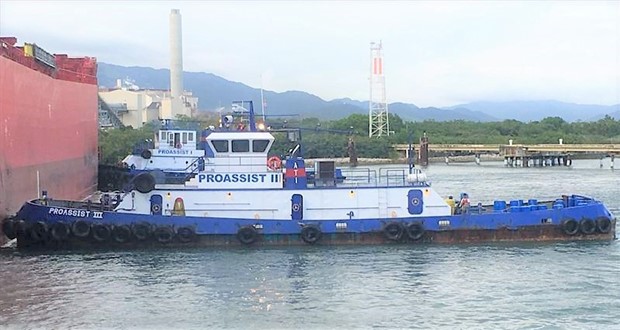(WASHINGTON) — Unsecured openings in the deck of a towing vessel led to its flooding and sinking off the coast of Puerto Rico, the National Transportation Safety Board (NTSB) said Thursday.
Marine Investigation Report 22/12 details the NTSB’s investigation into the Dec. 24, 2020, flooding and sinking of the towing vessel Proassist III near Puerto Yabucoa, Puerto Rico. The towing vessel was transiting northbound off the coast when its stern compartments began flooding. The three crewmembers on board were unable to pump out the water and eventually abandoned the vessel. No injuries were reported. The vessel was declared a total loss at $968,000.

Shortly after departing Laguna de las Mareas, Guayama, Proassist III encountered worsening weather conditions and seas began washing on deck. More than two hours after their departure, the crew noticed the vessel was down by the stern and found about 3 feet of water in the flanking rudder compartment. Roughly 40 minutes after the crew discovered the water and attempted to pump it off, the flanking rudder and steering rudder compartments were filled with water. A post-loss examination of the vessel showed openings in the vessel’s watertight bulkheads and a lack of gaskets and securing mechanisms for flush hatches and door openings on the deck.
NTSB investigators did not find any hull structural defects that could have allowed for the significant flooding and concluded a cover for an aft deck opening must not have been in place. Recently implemented regulations for towing vessels required all openings to be secured when operating offshore. The regulations also require maintaining the watertight and structural integrity of the vessel.
However, deficiencies found in the post-loss examination of Proassist III indicated that the vessel was not adequately maintained. The U.S. Coast Guard’s Concentrated Inspection Campaign found three other vessels owned by the Proassist III owner had hull and deck integrity issues, signaling the company did not have an effective maintenance program.
“An effective maintenance and hull inspection program would have proactively sought to minimize the wastage of steel on the Proassist III (and other company vessels) and made any corrosion issues easier to identify and flag for repair,” the report said.
The NTSB determined the probable cause of the sinking of Proassist III was unsecured or open aft deck hatches, which resulted in the flooding of the vessel’s aft compartments from water on deck and progressive flooding to other compartments through openings in watertight bulkheads. Contributing to the flooding of the vessel was the owner’s lack of an effective hull inspection and maintenance program.
“Over the past five years, the NTSB has investigated five casualties involving towing vessels whose weather decks and openings were in poor condition — leading to flooding and subsequent sinking,” the report said. “To protect vessels and the environment, it is good marine practice for owners to conduct regular oversight and maintenance of hulls, including between dry-dock periods, regardless of inspection requirements. An effective maintenance and hull inspection program should proactively address potential steel wastage, identify hull and watertight integrity deficiencies, and ensure corrosion issues are repaired in a timely manner by permanent means.”
– National Transportation Safety Board
